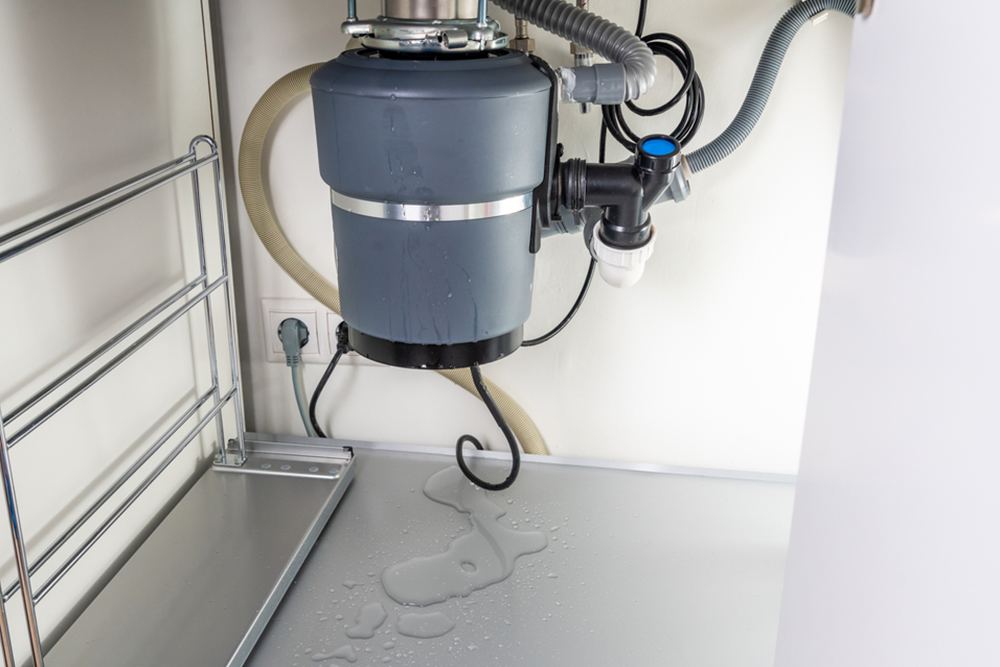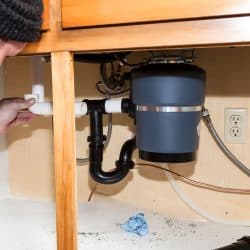The Comprehensive Guide to Fixing a Leaky Garbage Disposal
The Comprehensive Guide to Fixing a Leaky Garbage Disposal
Blog Article
How do you actually feel in regards to The Handy Guide To Fixing Your Garbage Disposal Leaking?

Garbage disposals are essential cooking area home appliances that aid in disposing of food waste effectively. Nevertheless, a dripping waste disposal unit can be an aggravating and unpleasant trouble to manage. The good news is, lots of leakages can be dealt with conveniently with a couple of basic steps. In this short article, we will talk about how to fix a dripping garbage disposal effectively.
Intro
Waste disposal unit are set up under kitchen sinks and are designed to shred food waste right into smaller pieces, allowing it to go through the pipes system quickly. While these gadgets are typically trusted, leaks can happen gradually as a result of damage, loosened connections, or damage to the unit.
Step-by-Step Overview to Repairing a Leaking Garbage Disposal
Switch off the Power
Before trying any kind of fixings, make sure that the power to the waste disposal unit device is switched off to avoid the danger of electrical shock.
Locate the Leak
Identify the specific area of the leakage and establish the reason
Tighten Links
Make use of a wrench to tighten any loosened links between the disposal unit and the plumbing system.
Replace Seals or Gaskets
If the leak is because of worn seals or gaskets, get rid of the old components and change them with new ones.
Patching Fractures or Holes
For fractures or holes in the disposal device, use epoxy or an ideal patching material to seal the broken area.
Determining the Resource of the Leak
Prior to trying to take care of a dripping garbage disposal, it is important to recognize the source of the leak. This can typically be done through visual inspection or by performing basic examinations.
Visual Examination
Inspect the garbage disposal unit thoroughly for any type of indications of water leakage. Pay close attention to areas around seals, gaskets, and connection points.
Examining for Leakages
One method to evaluate for leaks is by running water through the disposal unit and checking for any type of noticeable indicators of leak.
Typical Sources Of Leaks in Garbage Disposals
Worn Seals and Gaskets
Seals and gaskets play an essential duty in preventing water from leaking out of the garbage disposal. Gradually, these components can weaken, resulting in leaks around the disposal unit.
Loose Links
The links between the waste disposal unit and the plumbing system can end up being loose over time, causing water to leakage out during procedure.
Cracks or Holes in the Disposal Unit
Physical damages to the garbage disposal, such as splits or openings in the housing, can also lead to leakages.
Tools and Materials Needed for Taking Care Of a Dripping Garbage Disposal
Before beginning the repair service process, gather the required devices and materials, consisting of a screwdriver, adjustable wrench, plumbing technician's putty, substitute seals or gaskets, and epoxy or patching product for fixing fractures or openings.
Evaluating the Garbage Disposal After Repair
Once the repair service is complete, examine the garbage disposal by running water with it to ensure that the leak has actually been solved.
Preventive Upkeep Tips to Stay Clear Of Future Leaks
To prevent future leaks, it is necessary to carry out regular upkeep on your waste disposal unit. This includes keeping it tidy, preventing putting non-food things or hard objects down the disposal, and regularly checking for leaks or other concerns.
Verdict
Finally, taking care of a leaking garbage disposal is a fairly uncomplicated procedure that can be finished with fundamental tools and materials. By complying with the actions laid out in this post and practicing preventive upkeep, you can maintain your garbage disposal in good working condition and prevent pricey repair work in the future.
HERE’S HOW TO FIX YOUR GARBAGE DISPOSAL
WHAT TO DO IF SOMETHING IS STUCK IN YOUR GARBAGE DISPOSAL
If the impeller won’t turn, there’s probably something stuck in the disposal. It could be a steak bone or peach pit, although plumbers report pulling all sorts of inappropriate objects out of disposals, such as bottle caps or aluminum foil. Make sure power to the disposal is off, and look inside to see if you can see the source of the jam.
Never stick your fingers in a disposal. Pull out anything you see with tongs or pliers.
If the disposal still won’t work, it may be time to call a plumber or consider buying a new disposal. GEM Plumbing & Heating is here for all of your garbage disposal needs.
WHAT TO DO IF YOUR GARBAGE DISPOSAL DRAIN IS CLOGGED
Take everything out from underneath your sink and put a bucket or other container under your disposal to catch any water that drains out. Disconnect your disposal from the power supply. If it’s plugged into a wall outlet, unplug it. If it’s hardwired into an electrical box, go to the electrical panel and turn off the breaker for the disposal. Pour ¼ cup of baking soda into the drain, followed by ½ cup of white vinegar. Give the solution a few minutes to fizz and do its work. Look into the disposal with a flashlight to see if you can see an object that might be causing the clog. If you see it, remove it using tongs or pliers. MORE TIPS ON DEALING WITH A CLOGGED GARBAGE DISPOSAL
Never use drain cleaner in a garbage disposal. It can damage the plastic parts inside the disposal. You can also be splashed with the caustic liquid while working to clear the clog. Beware! Never stick your fingers into a garbage disposal. Trust us — not a good idea. In many instances, your dishwasher drains through your garbage disposal. This allows the disposal to grind any large food particles that may be drained out of your dishwasher. There are some jurisdictions, however, where the plumbing code prohibits such a connection. WHAT TO DO WHEN YOUR DISHWASHER DRAINS THROUGH THE DISPOSAL
Run some water in the sink so your plunger has at least a ½-inch of water to create a seal and plunge vigorously up and down several times. You may need to repeat this several times. Run hot water down the drain to clear any residue that remains.

We hope you enjoyed reading our part on Why Is . Thanks a ton for taking the time to browse our piece of content. In case you liked our article please don't forget to pass it around. Thanks a bunch for your time. Don't forget to check up our website back soon.
Or Book Technician Here Report this page